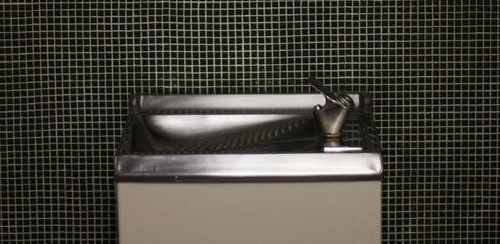Study finds drinking water in Ontario schools contains elevated levels of lead
Published November 7, 2019 at 1:16 am

According to a report from Global News, the drinking water in thousands of schools and daycares in Ontario has been found to contain dangerous levels of lead.
The study, which was a collaboration between Global News, The Toronto Star, the Ryerson School of Journalism and Concordia University’s Institute for Investigative Journalism, found that more than 2,400 schools and daycares exceeded the federal guidelines for safe amounts of lead in drinking water.
The study tested multiple water samples from schools and daycares across the province from 2016 to 2018.
While Ontario lists 10 parts per billion (ppb) as the maximum amount of lead in drinking water that is still safe to consume, Health Canada has listed the maximum amount of lead in drinking water to safely consume at 5 ppb.
According to the findings, nearly a third—29 per cent—of schools and daycares had at least one sample with lead levels that exceeded the maximum level that is safe to consume.
Further, approximately 24 schools and daycares reported samples with lead levels that exceeded 1,000 ppb, which is enough to immediately impact blood-lead levels in a child according to experts.
Additionally, there were 646 samples from daycares with elevated levels; 281 daycares had at least one sample exceed safe levels, while dozens of others had multiple instances.
The Peel District School Board had 773 schools with samples with elevated levels of lead, the most of any school board in the province.
You can see the list of affected facilities by clicking here.
Some affected schools and daycares include Morning Star Middle School, Streetsville Secondary School, Erin Mills Middle School, Meadowvale Secondary School, Clarkson Secondary School, Mineola Public School, Applewood Heights Secondary School, Hillcrest Public School, Gordon Graydon Memorial Secondary School, Tiny Treasure Mississauga Daycare, Cawthra Park Secondary School and others.
Schools that provide samples with elevated levels of lead are required by the province to flush their main water line for five minutes and their fixtures for 10 seconds every day.
However, while experts agree flushing temporarily reduces lead levels, according to Michele Prévost, a civil engineering professor at Polytechnique Montreal and a leading international expert on lead in drinking water, it’s not a reliable system.
“Flushing will help a little bit,” Prévost said in an interview published in Global News’ article. “But flushing will not solve the issue. The concentrations will creep up again within half an hour.”
Schools are more likely to have issues with lead in the water after long breaks during which time the plumbing isn’t being used—the water stagnates and absorbs more lead.
Lead exposure to children can lead to a myriad of health issues including heart disease, hypertension, cardiovascular disease, early dementia, gout, anaemia, and the list goes on.
Additionally, lead exposure to pregnant women can lead to an increased risk of birth defects and even stillbirth.
insauga's Editorial Standards and Policies advertising





